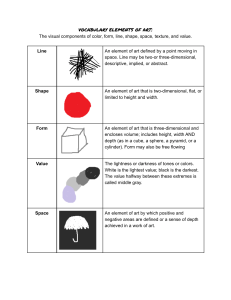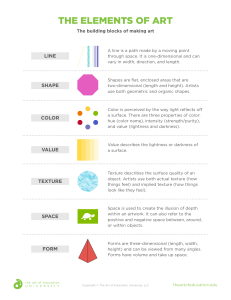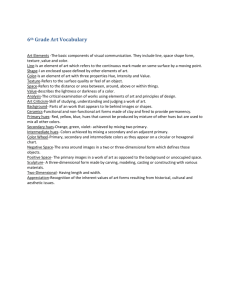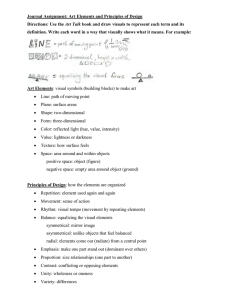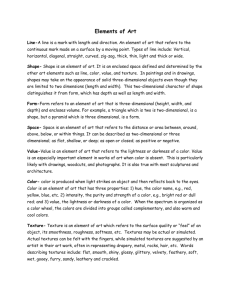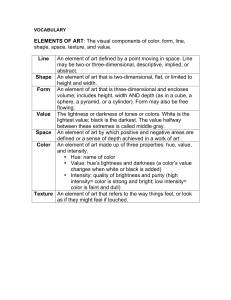principles and elements of art
advertisement
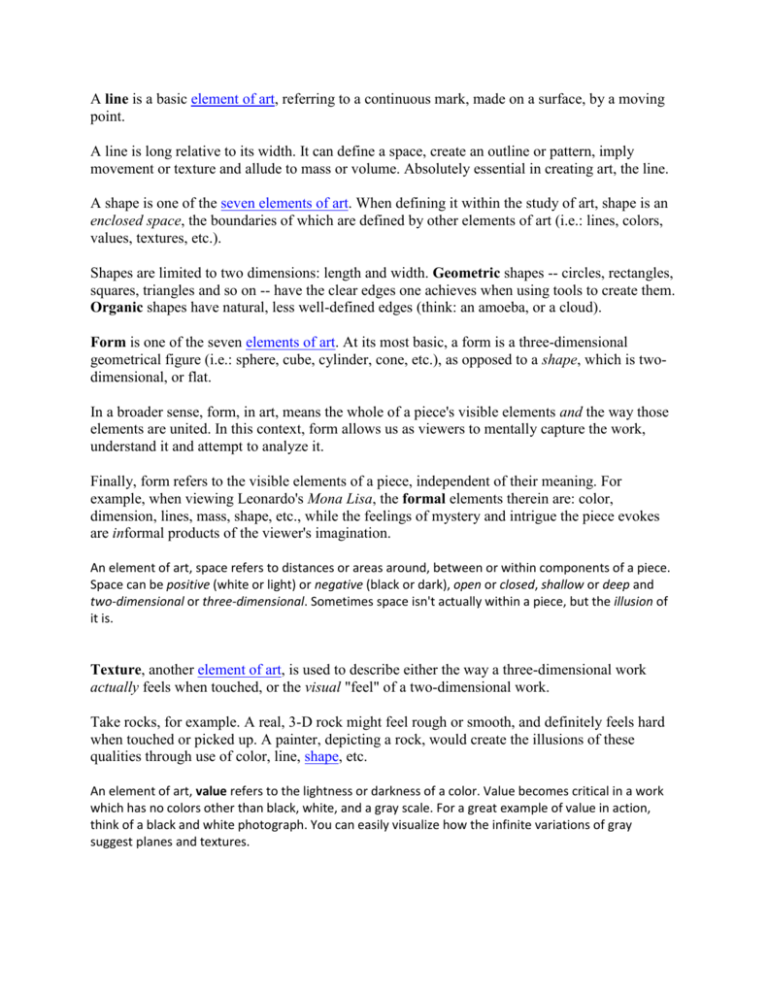
A line is a basic element of art, referring to a continuous mark, made on a surface, by a moving point. A line is long relative to its width. It can define a space, create an outline or pattern, imply movement or texture and allude to mass or volume. Absolutely essential in creating art, the line. A shape is one of the seven elements of art. When defining it within the study of art, shape is an enclosed space, the boundaries of which are defined by other elements of art (i.e.: lines, colors, values, textures, etc.). Shapes are limited to two dimensions: length and width. Geometric shapes -- circles, rectangles, squares, triangles and so on -- have the clear edges one achieves when using tools to create them. Organic shapes have natural, less well-defined edges (think: an amoeba, or a cloud). Form is one of the seven elements of art. At its most basic, a form is a three-dimensional geometrical figure (i.e.: sphere, cube, cylinder, cone, etc.), as opposed to a shape, which is twodimensional, or flat. In a broader sense, form, in art, means the whole of a piece's visible elements and the way those elements are united. In this context, form allows us as viewers to mentally capture the work, understand it and attempt to analyze it. Finally, form refers to the visible elements of a piece, independent of their meaning. For example, when viewing Leonardo's Mona Lisa, the formal elements therein are: color, dimension, lines, mass, shape, etc., while the feelings of mystery and intrigue the piece evokes are informal products of the viewer's imagination. An element of art, space refers to distances or areas around, between or within components of a piece. Space can be positive (white or light) or negative (black or dark), open or closed, shallow or deep and two-dimensional or three-dimensional. Sometimes space isn't actually within a piece, but the illusion of it is. Texture, another element of art, is used to describe either the way a three-dimensional work actually feels when touched, or the visual "feel" of a two-dimensional work. Take rocks, for example. A real, 3-D rock might feel rough or smooth, and definitely feels hard when touched or picked up. A painter, depicting a rock, would create the illusions of these qualities through use of color, line, shape, etc. An element of art, value refers to the lightness or darkness of a color. Value becomes critical in a work which has no colors other than black, white, and a gray scale. For a great example of value in action, think of a black and white photograph. You can easily visualize how the infinite variations of gray suggest planes and textures. Color is the element of art that is produced when light, striking an object, is reflected back to the eye. There are three (3) properties to color. First is hue, which simply means the name we give to a color (red, yellow, blue, etc.). The second property is intensity, which refers to the strength and vividness of the color. For example, we may describe the color blue as "royal" (bright, rich, vibrant) or "dull" (grayed). The third and final property of color is its value, meaning its lightness or darkness. The terms shade and tint are in reference to value changes in colors. Principles of art (use or arrangement of the building blocks of visual art) Pattern Pattern refers to the repetition or reoccurrence of a design element, exact or varied, which establishes a visual beat. Rhythm / Movement Rhythm or movement refers to the suggestion of motion through the use of various elements. Proportion / Scale Proportion is the size relationship of parts to a whole and to one another. Scale refers to relating size to a constant, such as a human body. Balance Balance is the impression of equilibrium in a pictorial or sculptural composition. Balance is often referred to as symmetrical, asymmetrical, or radial. Unity Unity is achieved when the components of a work of art are perceived as harmonious, giving the work a sense of completion. Emphasis Emphasis refers to the created center of interest, the place in an artwork where your eye first lands. Elements of Art (building blocks of visual art) Line Line is the path of a point moving through space. Shape / Form Shape implies spatial form and is usually perceived as two-dimensional. Form has depth, length, and width and resides in space. It is perceived as three-dimensional. Color Colors all come from the three primaries and black and white. They have three properties – hue, value, and intensity. Value Value refers to relative lightness and darkness and is perceived in terms of varying levels of contrast. Texture Texture refers to the tactile qualities of a surface (actual) or to the visual representation of such surface qualities (implied). Space / Perspective Space refers to the area in which art is organized. Perspective is representing a volume of space or a 3-dimensional object on a flat surface.


